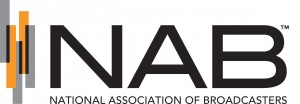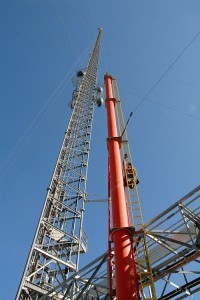 Just six months after the transition to digital television in the United States, proponents for the wireless mobile industry are back before the Federal Communications Commission asking the agency to “free up” additional frequencies by forcing major changes to local television stations.
Just six months after the transition to digital television in the United States, proponents for the wireless mobile industry are back before the Federal Communications Commission asking the agency to “free up” additional frequencies by forcing major changes to local television stations.
The CTIA – The Wireless Association, a trade group representing big mobile providers like Verizon, Sprint, and AT&T, and the Consumer Electronics Association have suggested high power television broadcasting should be replaced with networks of lower powered regional relay transmitters serving smaller areas. With considerably reduced power and antenna height, the groups argue, stations can be compacted into a smaller range of available channels, opening up new opportunities for wireless broadband services.
The number of available channels for television broadcasts has been shrinking since the early 1980s, when UHF channels 70-83 were largely reassigned for mobile phone use. Today’s UHF band ends at channel 51, as channels 52-69 are reassigned to several interests, including first responders and other public safety uses. With further compacting of the UHF band, up to 100-180 MHz of spectrum may be freed for mobile broadband use across the country.
How can this be done when the FCC believes many large urban regions of the country have used every available channel? By reducing the coverage area of individual transmitters. The wireless association claims interference problems come from high powered transmitters using soaring television antennas to give most television stations 30-40 miles of coverage area from a single transmitter site. By dramatically reducing both the power and antenna height, and instead using a network of relay transmitters serving smaller areas, television stations can cover their local communities and reduce distant signal reception. It’s these distant signals, and their capacity to interfere with other stations which requires the FCC to keep stations occupying the same or nearby channels far apart.
The CTIA suggests that with proper engineering of a low-powered network of transmitters, the Commission could reallocate UHF channels 28-51 for wireless communications instead, leaving UHF stations sharing channels 14-27.
The wireless lobby is selling this plan as a “win” for broadcasters, even though they will need to construct a network of lower powered transmitters and antennas to serve essentially every town in their existing service areas. For most, that would involve constructing 15-20 new transmitter sites. The wireless group says a more localized ‘cell-tower’ like approach to television transmission would serve areas currently not able to receive reception because of obstacles between the main high powered transmitter and a viewer’s set. Proper placement of transmission antennas would maximize reception for each transmitter. The wireless industry is even willing to bear the expense of purchasing transmitters, estimated at up to $1.8 billion dollars nationwide, to help broadcasters make the transition. That’s actually a cheap price to pay considering the frequencies converted for their use are worth tens of billions more.
The plan got a boost of sorts from the Justice Department, who filed their own comments with the FCC suggesting adding frequency spectrum for wireless-based broadband should be a top priority for the Commission.
“Given the potential of wireless services to reach underserved areas and to provide an alternative to wireline broadband providers in other areas, the Commission’s primary tool for promoting broadband competition should be freeing up spectrum,” Justice officials wrote.
The Justice Department believes handing over additional frequency spectrum will promote competition, increase wireless broadband speeds, and lower prices, despite no evidence that wireless broadband competition would suddenly appear on the scene, or that the prevailing wireless carriers would actually reduce pricing and relax usage limits.
 Broadcasters are not thrilled with the wireless industry plan.
Broadcasters are not thrilled with the wireless industry plan.
The National Association of Broadcasters, to paraphrase, knocked the wireless industry for getting too greedy with its spectrum requests. The NAB believes wireless providers like Verizon, AT&T, Sprint and T-Mobile are sitting on frequencies already allocated, but not yet used, for mobile communications networks, and they should use them before they come knocking looking for more.
Even more concerning to the NAB is the disruption the CTIA plan would cause for Americans still watching over-the-air free television. Channel numbers would almost certainly have to be reassigned… again, at least for UHF stations. That created significant confusion for viewers on the final date of the DTV transition in June when many stations either moved their digital signal back to their original analog channel number or relocated somewhere else on the dial. Many Americans lost reception until they were taught to re-scan their televisions or converters to find the channels gone missing.
The NAB also questions the reception improvement a network of low power television transmitters could provide, particularly for those just on the edge of one relay transmitter and another. Anyone trying to watch a low power television station today more than a few miles from the transmitter site can testify it’s not a pleasant experience. Even greater concerns impact those “distant viewers” who may live between two or more cities, each with their own local stations. Those viewers, using external antennas, can often watch television from several cities depending which direction their rooftop antenna is pointed, but could end up receiving no signals at all if CTIA’s plan is approved.
Broadcasters are also concerned about the impact lower powered transmitters will have on the forthcoming Mobile DTV service, which will bring programming to devices on-the-go.
The war over frequencies continues, as the broadcasters and mobile providers fight over who ultimately controls airwave real estate estimated to be worth $36-65 billion dollars.


 Subscribe
Subscribe

While I’m not generally a big advocate of protecting business interests by government action, it seems exceedingly unfair for the FCC to allow, indeed advocate, the usurpation of spectrum from broadcasters so immediately after they were forcibly required to upgrade their hardware for the “digital transition” spending millions of dollars that they will not recoup any time soon.
I’m with the broadcasters on this one (the stations/affiliates that spent the money, not the content providers like FOX).